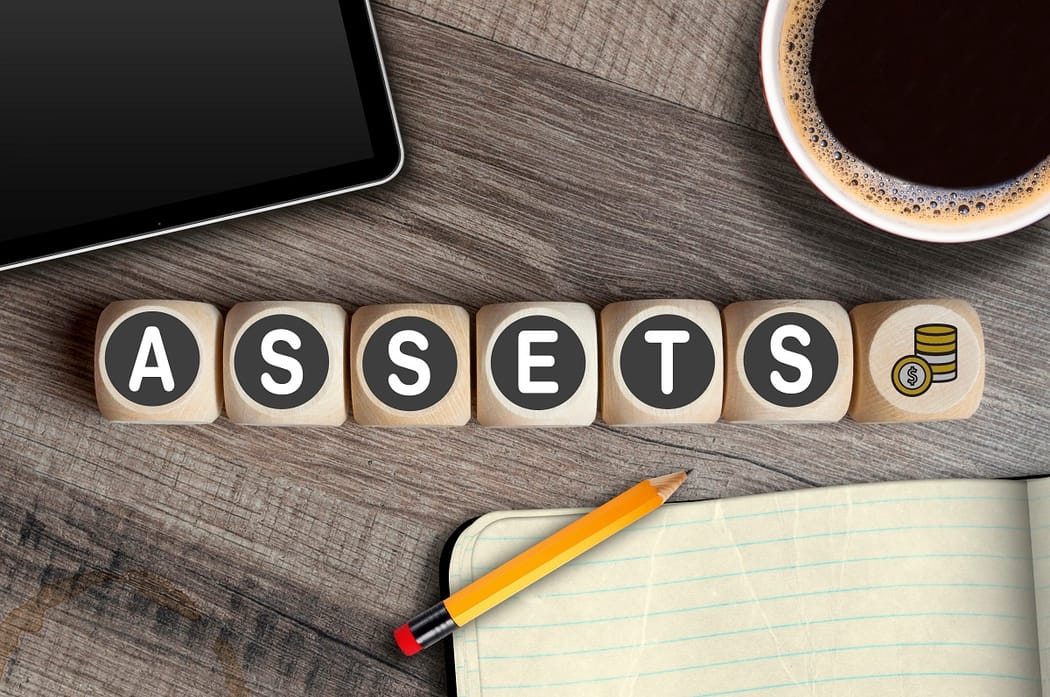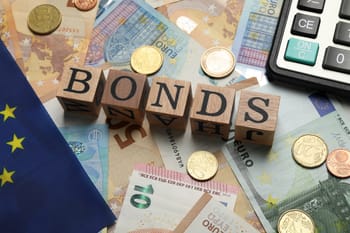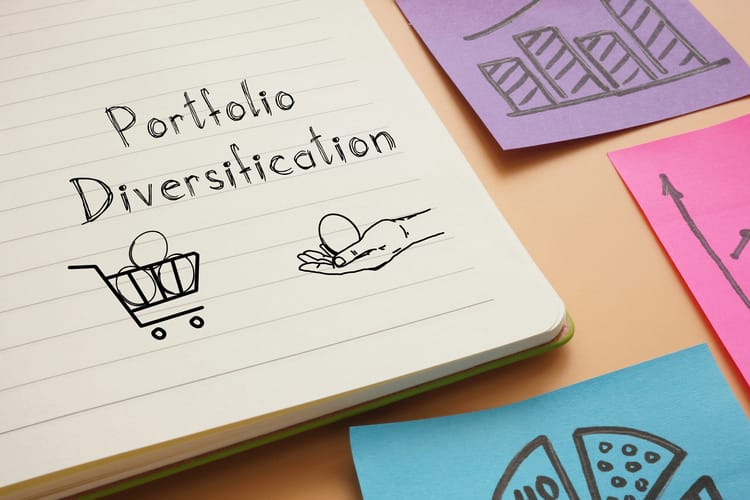A good investment portfolio consists of spreading risks in asset classes with little to no correlation. A positive correlation is where two asset classes move up or down simultaneously because they are relative to one another. A negative correlation refers to where one asset falls; the other moves up. A zero correlation is where no assets impact one another in any conditions and is an ideal investment portfolio. While you cannot eliminate risks completely, diversifying your portfolio between non correlated asset classes and negatively correlated asset classes should reduce the overall volatility of the investment and yield a consistent ROI in the long run.
Asset class refers to a group of investment vehicles that share similar characteristics. Different classes, or categories, of investment assets are classified together based on their financial structures being comparable. They are governed by the same set of rules. In this article, we will explore the correlation, both positive and negative, between asset classes in the following:
- Understanding asset classes
- Asset class and investing strategy
- Understanding correlation
- Fluctuation of correlation between the assets
- Utilising asset correlation in your investment
- Why asset correlation matters for your investments.
Understanding asset classes
The asset class is a collection of similar financial instruments with similar risk characteristics. Investment vehicles are viewed by financial advisors as asset class groupings that are utilised to diversify portfolios. Each asset class is expected to represent different risk and return investing characteristics and perform differently. The aim of understanding asset classes is to diversify portfolios by combining assets from different categories to minimise risks.
Asset class types
Although there is no standard count on the types of asset class, most analysts have split asset classes into five main categories:
- Stocks or equities, are ownership shares issued by public companies. Investors buy and sell them on stock exchanges. You can profit from equities either through share price increase or through dividends
- Fixed-income investments[1], such as bonds or other fixed-income securities, are debt instruments that offer a fixed interest. Investing in these types of assets is often thought to be less hazardous than investing in equities or other asset classes
- Money market funds, for example, are cash or cash equivalents. The liquidity of cash or cash equivalent investments is their principal benefit. Money in the form of cash or currency equivalents is conveniently accessible at all times
- Real estate and other tangible assets are considered an inflation-protective asset type. Because of their tangible nature, such assets are regarded as more of a "real" asset
- Forex, and future contracts, spot and forward foreign exchange, options, and a growing number of financial derivatives fall under this category. Financial products that are based on or generated from an underlying asset are known as derivatives. Stock options, for example, are a stock derivative
Some assets are difficult to categorise. The wide range of investing options further adds to the complexity. ETFs (exchange-traded funds) are similar to stocks in that they trade on exchanges. They can be made up of investments from any of the asset classes (e.g. oil company equities included in an ETF for exposure to the energy industry).
Location can also be used to categorise assets. Domestic securities, overseas investments, and developing market investments are frequently viewed as separate asset groups by market experts. Hedge funds or private equity investments, peer to peer lending, collectibles, and cryptocurrencies are among the less well-known asset groups. As a result, they're commonly lumped together under the term "alternative investments."
What are the most popular asset classes?
An investment portfolio should ideally include a well-balanced mix of investments from several asset types, such as equities, bonds, and gold. Each of these assets has a distinct role in your portfolio, offering growth, income, relative stability, and inflation protection. Equities, fixed income, and cash equivalent or money market instruments have historically been the three most popular asset classes. Real estate, commodities, futures, other financial derivatives, and even cryptocurrencies are now included in the asset class mix by most investing experts. In fact the top assets by market cap[2] are gold and silver, tech stocks, oil and natural gas, and to some extend cryptocurrency.
Which asset classes are the most risky?
No asset class is free from risk. Each of them has its own categories of risk. For example, even though cash is considered to be the safest asset to have, it is not free from risk. The kind of risk cash is prone to is inflation. Nevertheless, there is a form of consensus when it comes to agreeing which asset classes are the riskiest:
- Equities are widely regarded as the riskiest asset class. Apart from dividends, there are no guarantees, and investors' money is dependent on the achievements and failures of private enterprises in a fiercely competitive market. More specifically, foreign stocks have a risk element[3] in the asset class but with a high return potential
- Real estate is the second-worst investment for investors, after equities. It was demonstrated in 2008 that property does not always rise in value. Real estate investments must be weighed against environmental and upkeep costs in order to make an informed decision. However, like equities, real estate also offers the biggest potential return
- Alternative investments[4] (e.g. hedge funds, peer to peer lending, cryptocurrency and etc) are high-risk investments that might be illiquid due to transfer restrictions and the lack of a secondary market. They can be extremely leveraged, speculative, and volatile, with an investor risking losing all or a significant portion of their money. The price, value, and portfolio holdings of alternative investments may be opaque due to lack of regulatory requirements
Asset class and investing strategy
An investing strategy is how one invests in a certain asset class for the best possible outcome, and there are numerous ways to do it. Growth, value, income, and a range of other elements can be used to identify and categorise investment strategies. The most commonly agreed upon investment strategies are:
- Buying and holding where investors hold on to their investments for the long term rather than ride out the market's short-term swings, generating steady returns
- Contrarian investing where an investor does the opposite of a market trend, like selling what other investors are buying and vice versa
- Value investing[5] where an investor invests on cheap assets based on its intrinsic value rather than the market value hoping that, in the right market conditions, the investment will flourish
- Income investing[6] is where an investor is only looking for a steady flow of cash in the form of interest or dividend rather than enhancing the value of the portfolio
Understanding correlation
Most investors think that their portfolio is sufficient simply because they have considered various asset classes. However, it is not the number of asset classes that make a portfolio diversified. Rather it is the ROI balanced with risk that is important for the portfolio, and asset class correlation is one way to determine that balance.
Asset correlation is used in order to determine if two asset classes are moving in the same direction. There are positive correlations, negative correlations and neutral correlations. A neutral correlation means that the assets are not impacted by each other no matter the market condition.
Although more asset classes may provide a better opportunity for non correlated investments, it may cost you more if you blindly add newer ones without researching the relativity.
Unfortunately, there is no straightforward way to measure correlation. Determining asset correlation relies on complex mathematical formulas that merely aids financial analysts to evaluate asset class. Even then, the calculation is subject to market change. Two assets that had little correlation 5 years ago maybe more reactive to each other now.
Fortunately, many online visualising tools show asset class correlations that are easily accessible to everyone.
Positive correlation
A positive correlation refers to the situation where if one asset class reacts in a certain way, whether positively or negatively, another asset class will react in a similar way. Examples of positively correlated assets include the S&P 500. S&P 500 has the highest positive correlations with REITS, Equities, hedge funds, and global securities. If one of them moves up or down, the S&P 500 will react the same way. This is because the S&P 500 relies on the benchmark of all the correlated assets. A positive correlation is measured on a scale of 1.0.
Negative correlation
A negative correlation is measured at -1.0. A negative correlation refers to the opposite situation where if one asset class reacts positively or negatively, another asset class will react in the opposite matter - meaning if one asset gains, the other loses. A negative asset correlation is not permanent, though, as market conditions may change the correlation between two asset classes. Investing in assets with a negative correlation will not always produce a gain.
Examples of negative correlation
There are very few examples of permanent low correlated investment classes. General examples of negative correlation are stocks and bonds, but even that may turn into a positive correlation. Another example is cash, as it does not correlate with the other asset classes, except bonds, because it is not reliant on any other assets.
Measuring asset correlation
Firstly, achieving a true zero correlation between assets is rare. Secondly, low correlation asset classes are not static - meaning it changes according to market conditions. An asset that did not influence another previously could be impacted now.
Fluctuation of correlation between the assets
Let's start with an example to understand fluctuation of correlation. Historically, bonds had little correlation to stocks in their past performance. However, recent studies[7] have shown that bonds are becoming closer to stocks in terms of their impact. International stocks, which were not influenced by domestic currency stocks, are now reacting to US stocks. This is because everything is globalised, and companies are no longer operating in a single country.
Not all assets react the same way to market changes (e.g. cash reacts differently to inflation than gold). For example, European stocks and oil were negatively correlated[7] - so if the oil prices fell, the value of European stocks rose. However, this relationship changed by the end of 2015 when the relativity relationship became the opposite - meaning now, stock prices would also fall if oil prices decreased. This happened because oil has an economic impact on countries, and oil is a major portion of the stock market. Therefore, if a country faces a recession, oil prices will crash, and their stockholders will also suffer losses. They will sell whatever stocks they hold to cash out, driving the prices further down. This is a natural reaction to an economic event. Financial analysts work tirelessly to figure out the most recent correlation of assets to ensure that their clients' portfolios remain stable.
Utilising asset correlation in your investment
You cannot truly hedge against positive correlations, and achieving zero asset correlations is near to impossible. Instead, you can utilise the asset correlations, positive, negative, and neutral, to minimise the potential losses. Here we discuss the ways you can utilise assets with all correlation types to enhance your investment portfolio:
- Check which asset are reliant on other asset classes to allocate them proportionately
- Research the risk and returns of your picked asset class and analyse whether the risks are worth the returns
- Do not stick to only assets with negative or zero correlations as they are subject to change. Rather combine both types of asset correlation in your portfolio Combining all three kinds of asset correlations can give you an upper hand to yield generous returns and cushion you from potential losses
- Keep yourself updated on the fluctuation of asset correlations from an online portfolio visualiser from time to time
- Adjust the volatility of your portfolio by choosing assets that can counter each other
Why asset correlation matters for your investments
If you know the correlations between any of your assets, you can better diversify your portfolio and reduce volatility. Understanding asset correlation can also assist active traders identify trades and devise strategies. In order to acquire a better understanding of the market as a whole, it is helpful to look at asset correlation. When the market is exceptionally volatile, it is generally a good idea to understand asset correlation to determine your investment tactics.
Can I use the correlation coefficient to predict stock market returns?
Correlation can help you to better comprehend risk since it compares the potential return on a portfolio's various assets to the risk associated with that portfolio's various assets. However, the correlation coefficient has low predictive power for individual stock returns. Modern portfolio theory has the flaw of assuming that asset correlations are static throughout the time when in fact, they are dynamic and ever-changing. While investors can benefit from a better understanding of correlations by constructing more diverse portfolios, correlation coefficients don't really indicate much beyond that.
Summary
Understanding positive and negative asset classes correlation is important to determine your asset allocation and your portfolio diversification. Depending on the asset class and their relationship with each other, your investment strategy will be different. An ideal portfolio would have assets with little to no correlation. However, under globalisation, where all assets react to each other in some way dynamically, it is difficult to achieve the ideal portfolio permanently. The adjustment from time to time is required as the correlation changes over time. However, while not static, the correlation will give you an overview of the market and help you make the minimum adjustment needed to keep your portfolio healthy.
Asset correlation helps investors foresee future trends and manage their portfolio risks accordingly. With various tools online, it has now become easier than ever to calculate asset correlation and its fluctuation. To ensure the efficiency of the portfolio, investors need to understand the relationship between the asset classes to determine whether they are reliant on each other or not. Investors need to observe the changing relativity between the assets in the market. Lastly, after learning how the assets work and react, investors can optimise the correlations in the portfolio.
Frequently Asked Questions
Why does asset class correlation matter for investors?
Because it helps reduce portfolio volatility. If your investments are spread across assets that don’t move in the same direction, losses in one area may be balanced by gains in another. This way, you can aim for more stable long-term returns.
Can I rely on correlation to predict market performance?
Not really. Correlation is useful for understanding risk and building diversification, but it doesn’t predict individual stock or asset returns. Market conditions constantly change, which means correlations are dynamic, not fixed.
How can I use correlation to improve my portfolio?
Combine assets with different correlation types. Don’t limit yourself to only negatively or uncorrelated assets, as these relationships shift over time. Regularly monitor correlations with online tools and adjust allocations when necessary to keep your portfolio balanced and resilient.
List of References
- Source: woodgundy.cibc.com
- Source: companiesmarketcap.com
- Source: getsmarteraboutmoney.ca
- Source: pimco.com
- Source: schroders.com
- Source: corporatefinanceinstitute.com
- Source: wealthmanagement.bnpparibas






